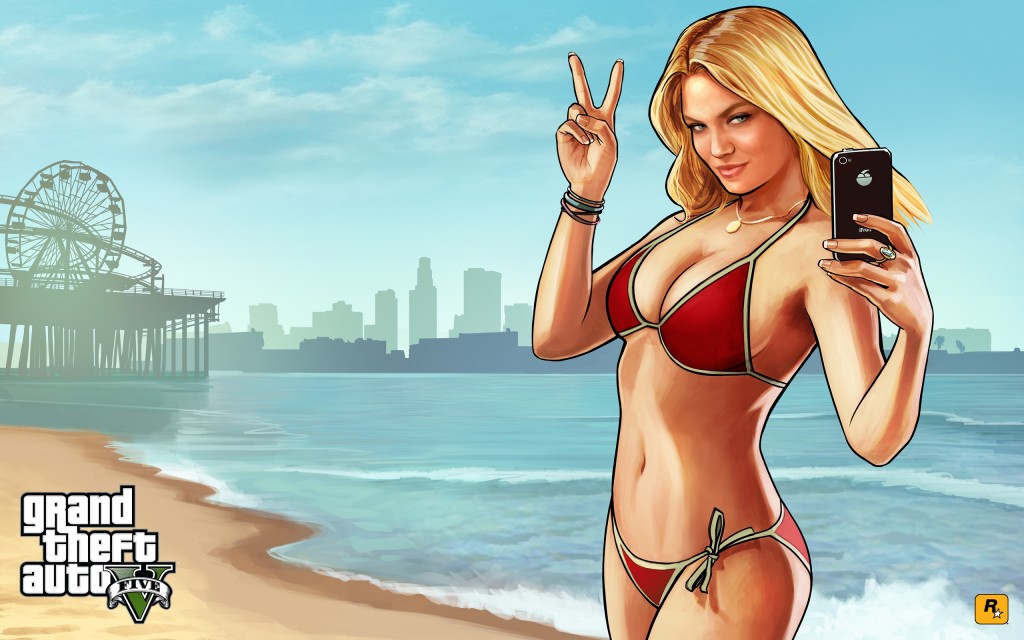
Rockstar Games has unleashed “Grand Theft Auto V” to nearly universal acclaim, and with over $1 billion in sales in three days, “GTA V” is the biggest media launch in history. Combining the traditional open world gameplay with a complex, well-developed narrative, “GTA V” has earned the hype.
“GTA V” takes huge steps with its narrative, abandoning the trite rags-to-riches tale in favor of a more complex, character-driven story. The game features three protagonists: Michael, a retired bank robber, Franklin, an unsuccessful gang-banger and Trevor, a psychotic drug dealer, each with their own motivations and abilities. The interactions between them serve as the heart of the story, with the plot itself acting as a vehicle for their character development. The heroes of “GTA V” are far from heroic. While the series has been known for its anti-heroes, the protagonists of “GTA V,” particularly Trevor and Michael, are downright villainous. The characters can be unlikeable, but the story is the best the series has produced so far.
The core ingredients of “GTA” have always been equal parts violence and satire. “GTA V” keeps with these traditions, picking apart American culture dealing with everything from social media to torture. While there is a good deal of childish humor, the game handles its heavier subjects with surgical precision. “GTA V” doesn’t answer any mind-blowing questions, but presents them to the players, inviting them to make their own decisions. Furthermore, the game’s humor adds to the darker parts of the story, taking the grim moments and making them more unsettling with how casually characters treat them.
“GTA V” remains an open world, third person shooter game, but the gameplay has been improved overall. Shooting feels much more fluid, and the abundance of new and customizable weapons makes rampaging through Los Santos even more fun. Whether it’s by land, sea or air, there are a multitude of ways to travel the expansive cityscape and desert of San Andreas. There is plenty to do in “GTA V,” with a 40-hour story mode and a variety of side missions to keep players busy.
While “GTA V’s” story does not always mesh with the gameplay, this does not take away from the narrative itself. Story in video games works best when in tandem with the gameplay, both accenting each other and creating a unified experience. However, to achieve this with “GTA V,” one of two things would have to happen: either Rockstar would need to remove the open world aspects of the game, or they would need to limit the story to one centered around deranged mass murderers. By giving the player agency, game developers sacrifice a certain amount of control. By removing the open world aspects of “GTA V,” the narrative would be stronger, but at the cost of the game’s signature style of play. “Grand Theft Auto” without freedom simply isn’t “GTA.” On the other hand, sacrificing the narrative to account for the possibility of players not acting a specific way would be a crime. “GTA III” featured a silent protagonist who simply took orders and killed people. Its gameplay and story were much more in sync, but the narrative is underwhelming compared to “GTA V.” Neither of these options are viable and would only ruin the balance between gameplay and story that Rockstar has achieved.
While “GTA V” is not the ultimate example, it is undeniable that video games, as a medium, are art. The ability to mix player control into the narrative provides possibilities that no other form of media can replicate. It is unfair to make comparisons with film or literature — the “Citizen Kane of gaming” is a fallacy that hinders the progression of the medium. “GTA V” is a damn fine game with an incredible story and amazing gameplay, and the fact that it pulled off everything without betraying its roots makes it all the better.


